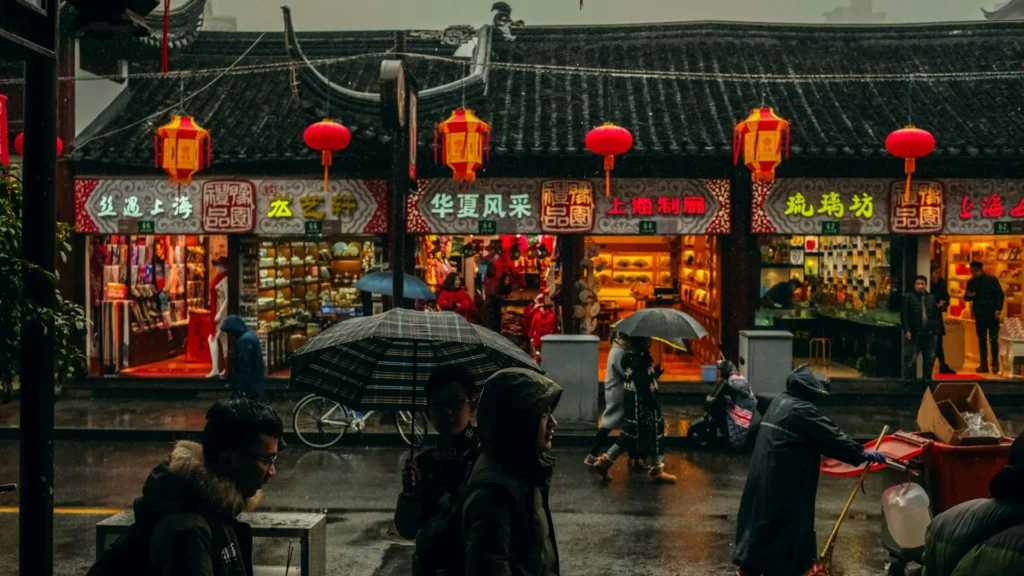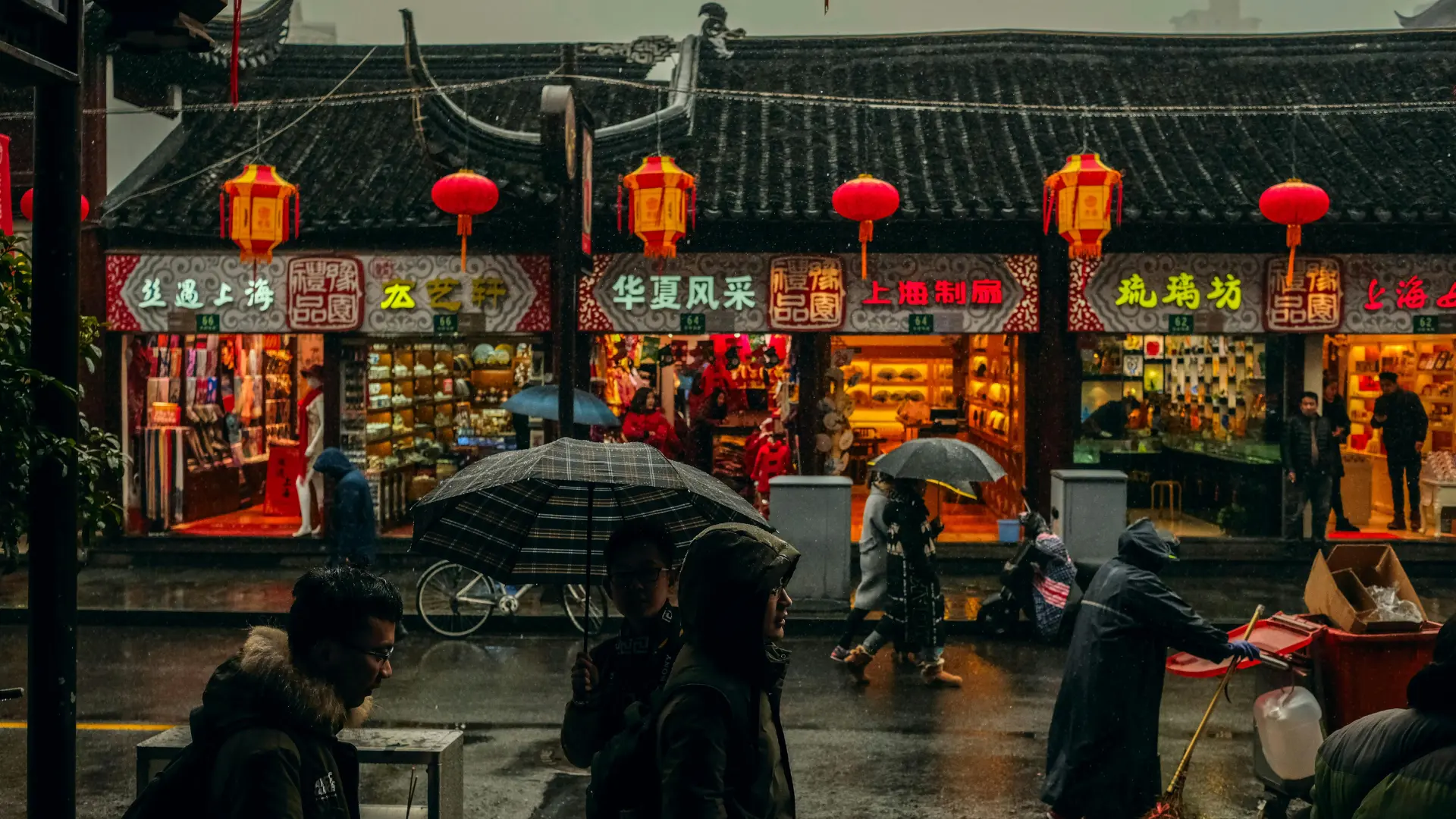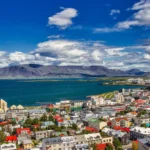When you imagine travelling through China, you picture yourself stepping into a land where every corner feels like a bridge between past and future. One moment, you’re wandering across centuries-old stone walls that once guarded empires; the next, you’re gliding at lightning speed on a train that feels more like the future than the present. Few destinations in the world offer such a dramatic contrast between history and modernity.
Travelling through China is more than just a trip—it’s an emotional encounter with stories written in palaces, whispered in mountain temples, and reflected in neon-lit skylines. As you journey across this vast country, you experience a rhythm of life that combines ancient rituals with futuristic innovation, reminding you how deeply culture and progress can coexist.
This complete guide will walk you through everything you need to know—whether you’re fascinated by dynasties, eager to taste authentic Chinese cuisine, or curious about riding the world’s fastest trains. You’ll discover not only where to go but also how to connect with traditions and embrace the modern wonders that make China unforgettable.

Table of Contents
Why Travelling Through China Should Be on Your Bucket List
China is not just another country on a map—it’s a world within itself. Covering nearly 9.6 million square kilometers, it’s the fourth-largest country on earth, offering landscapes and experiences so diverse that no two journeys are ever the same.
Here’s why travelling through China deserves a spot on your travel bucket list:
- A Cultural Time Capsule – China is home to 56 ethnic groups, each contributing unique customs, dress, and festivals. You won’t just visit China—you’ll step into dozens of micro-worlds within it.
- UNESCO World Heritage Sites – With more than 55 sites recognized globally, you’ll find ancient palaces, sacred mountains, and breathtaking natural wonders.
- A Blend of Old and New – From the silent courtyards of the Forbidden City to the dazzling skyline of Shanghai, you’ll constantly shift between history and the future.
- Accessible Adventure – Thanks to modern infrastructure, including the largest high-speed rail network in the world, travelling through China is easier than ever.
- Endless Culinary Discoveries – Every region introduces you to new flavors, from fiery Sichuan spices to delicate Cantonese dim sum.
Imagine this: One morning, you’re savoring dumplings at a bustling Xi’an food market, and by evening, you’re standing at the foot of the Great Wall, watching the sunset over mountains once patrolled by ancient soldiers. That’s the kind of journey China offers.
Ancient Wonders You Can’t Miss When Travelling Through China
China’s history spans more than 5,000 years, making it one of the world’s oldest civilizations. As you travel, you’ll feel like you’re flipping through a living history book—except here, the pages are palaces, temples, and archaeological treasures.
The Great Wall of China – Walking Through History
You can’t talk about travelling through China without mentioning the Great Wall. Stretching over 21,000 kilometers, this massive fortification wasn’t just built to keep invaders out—it became a symbol of China’s resilience and ambition.
- Best Sections to Visit:
- Badaling – The most popular and restored section, close to Beijing.
- Mutianyu – Less crowded, surrounded by lush forests.
- Jinshanling – Ideal for hiking with panoramic views.
- Insider Tip: Visit in spring or autumn when the weather is pleasant and the scenery bursts with colors. Arrive early morning to avoid heavy tourist crowds.
Standing on the Great Wall, you don’t just admire the architecture—you feel the weight of centuries pressing beneath your feet.
The Forbidden City – Heart of Imperial China
Located in Beijing, the Forbidden City was once the palace of emperors for over 500 years. With more than 9,000 rooms, it’s one of the largest palace complexes in the world.
- Highlights to Explore:
- The Hall of Supreme Harmony, where emperors held ceremonies.
- The Imperial Garden, a peaceful retreat with ancient trees and pavilions.
- The intricately designed Golden Throne Room.
Walking through its red walls and golden roofs, you’ll feel like you’ve entered another era, where emperors ruled with absolute authority.
The Terracotta Army in Xi’an – Guardians of the Past
Discovered in 1974 by farmers digging a well, the Terracotta Army is one of the greatest archaeological finds of the 20th century. Over 8,000 life-sized clay soldiers were buried to protect Emperor Qin Shi Huang in the afterlife.
- Each warrior has distinct facial features—no two are alike.
- The site includes chariots, horses, and weapons, offering a glimpse into ancient military power.
- Visiting the museum allows you to stand face-to-face with history.
Temples and Sacred Sites Across China
China’s spiritual traditions are deeply tied to its temples and mountains.
- Shaolin Temple (Henan) – Famous as the birthplace of Kung Fu.
- Lama Temple (Beijing) – A Tibetan Buddhist temple with a massive wooden Buddha statue.
- Mount Emei (Sichuan) – One of the Four Sacred Buddhist Mountains.
These sites remind you that spirituality in China isn’t confined to religion—it’s embedded in daily life.
Table: Ancient Wonders in China Comparison
| Site | Location | Key Highlight | Best Time to Visit |
|---|---|---|---|
| Great Wall | Beijing | Historic defense wall | Spring & Autumn |
| Forbidden City | Beijing | Imperial palace | Year-round |
| Terracotta Army | Xi’an | Thousands of warrior statues | All year |
| Shaolin Temple | Henan | Kung Fu origins | Spring & Autumn |
Modern Marvels When Travelling Through China
When you picture China, your mind might leap to emperors and dynasties, but travelling through China today also means stepping into a future that feels decades ahead of the rest of the world. Futuristic skylines, high-speed trains, and vibrant nightlife remind you that China is not just about its past—it’s constantly reshaping the present.
Futuristic Cities – Shanghai, Beijing, and Shenzhen
If ancient sites reflect China’s soul, its modern cities showcase its energy and ambition.
- Shanghai – Walking along The Bund, you’re greeted by colonial architecture on one side and futuristic skyscrapers like the Oriental Pearl Tower and Shanghai Tower on the other. By night, the skyline glows in colors that make you feel as though you’ve stepped onto a sci-fi movie set.
- Beijing – The capital is more than imperial palaces. You’ll find cutting-edge tech zones, contemporary art districts like 798 Art Zone, and an ever-expanding subway system. Beijing is where ancient tradition and modern innovation merge seamlessly.
- Shenzhen – Known as China’s Silicon Valley, this city is a hub of innovation. From world-class shopping malls to theme parks like Window of the World, Shenzhen is a city that rarely sleeps.
Tip for travelers: Always carry a camera—these cities are designed to impress both by day and night.
High-Speed Trains – Redefining Travel Through China
Imagine covering nearly 1,200 kilometers from Beijing to Shanghai in under 5 hours. That’s the magic of China’s high-speed rail system—the largest and fastest in the world.
- Why it’s impressive: Trains travel at speeds of up to 350 km/h.
- Convenience: Tickets are affordable, trains are punctual, and stations are ultra-modern.
- Experience: Wide seats, clean facilities, and breathtaking views as the countryside flashes by.
For you as a traveler, this means you can explore more destinations in less time, without the hassle of airports.
Skyscrapers, Shopping, and Nightlife
Travelling through China also means indulging in a cosmopolitan lifestyle.
- Shopping districts:
- Nanjing Road (Shanghai) – One of the busiest shopping streets in the world.
- Wangfujing (Beijing) – Famous for both luxury brands and quirky street snacks.
- Luohu (Shenzhen) – Known for electronics and fashion.
- Nightlife hotspots:
- Rooftop bars in Shanghai overlooking the Huangpu River.
- Beijing’s Sanlitun district with trendy bars and clubs.
- Shenzhen’s lively Coco Park nightlife area.
You’ll find yourself blending ancient exploration by day with vibrant city adventures by night.
Table: Top Modern Experiences in China
| City | Highlight | Why Visit |
|---|---|---|
| Shanghai | The Bund, skyscrapers | Mix of East & West |
| Beijing | Tech + tradition | Culture + Innovation |
| Shenzhen | Futuristic economy | Tech hub |
Scenic Routes and Natural Beauty While Travelling Through China
Beyond cities and history, China surprises you with natural wonders that feel untouched by time. Travelling through China allows you to shift from bustling streets to tranquil rivers and snow-capped mountains within hours.
Yangtze River Cruise – Nature Meets History
The Yangtze River, stretching over 6,300 kilometers, is more than a river—it’s a lifeline of Chinese civilization. Taking a cruise allows you to experience both breathtaking landscapes and cultural landmarks.
- Highlights:
- Three Gorges: Dramatic cliffs and winding waters.
- Three Gorges Dam: The largest hydroelectric project in the world.
- Shibaozhai Pagoda: A 12-story wooden temple perched on a cliff.
Best for: Travelers who want a mix of relaxation and history.
Silk Road Adventures
The Silk Road was once the trade route that connected China to the rest of the world. Today, retracing its path offers you a chance to walk in the footsteps of traders, monks, and explorers.
- Cities like Dunhuang, with its Mogao Caves filled with ancient Buddhist art.
- The deserts of Gansu, where camels still trek across sand dunes.
- Markets overflowing with spices, textiles, and handcrafts.
Travelling along the Silk Road is like peeling back layers of history, discovering how China shaped and was shaped by the world.
Tibet and the Himalayas
If you’re seeking a spiritual journey, Tibet is unmatched.
- Lhasa – Home to the Potala Palace, once the winter residence of the Dalai Lama.
- Mount Everest Base Camp – For the adventurous, this offers one of the most dramatic landscapes on earth.
- Monasteries – Where monks chant prayers and butter lamps flicker in the twilight.
Travel tip: Due to its altitude, acclimatization is crucial. Always allow time to adjust.
Guilin and Zhangjiajie Landscapes
China’s landscapes are so unique they’ve inspired countless works of art—and even movies.
- Guilin – Famous for its limestone karst mountains reflected in the Li River. A river cruise here feels like sailing through a traditional Chinese painting.
- Zhangjiajie – Known for its towering sandstone pillars, this UNESCO site inspired the floating mountains in Avatar.
These places remind you that travelling through China is also a feast for the eyes.
Table: Scenic Routes in China
| Route/Region | Highlight | Best For |
|---|---|---|
| Yangtze River | Cruises, pagodas | History + Nature lovers |
| Silk Road | Desert trade towns | Culture seekers |
| Tibet | Potala Palace | Spiritual explorers |
| Zhangjiajie | Stone pillars | Adventure + Photography |
Experiencing Chinese Culture When Travelling Through China
When you travel through China, you don’t just see the sights—you live the culture. The heartbeat of the country is in its festivals, food, arts, and everyday customs. To truly connect with China, you need to embrace these cultural elements and allow them to shape your journey.
Festivals You Should Experience
China’s festivals are vibrant, colorful, and deeply tied to tradition. If you time your travels around one of these celebrations, you’ll witness the country’s cultural spirit in full bloom.
- Chinese New Year (Spring Festival)
- The most important festival in China. Streets are decorated with red lanterns, firecrackers light up the night, and families reunite for feasts.
- You’ll get to taste dumplings, sticky rice cakes, and other seasonal delicacies.
- Mid-Autumn Festival
- Celebrated with mooncakes, lantern displays, and gatherings under the full moon.
- A perfect chance to learn about Chinese myths, such as the story of Chang’e, the Moon Goddess.
- Dragon Boat Festival
- Held in memory of the poet Qu Yuan.
- You’ll see dragon boat races and taste sticky rice dumplings wrapped in bamboo leaves (zongzi).
Tip: Festivals are peak travel times, so book accommodation early and expect large crowds.
Chinese Cuisine – A Journey for the Taste Buds
If there’s one part of travelling through China you’ll remember forever, it’s the food. Chinese cuisine isn’t one flavor—it’s a thousand, each tied to a region’s geography and culture.
- Sichuan Cuisine – Bold, spicy, and numbing flavors thanks to Sichuan peppercorns. Must-try: Hot Pot.
- Cantonese Cuisine – Light and delicate dishes with an emphasis on freshness. Must-try: Dim Sum.
- Beijing Cuisine – Famous for Peking Duck, roasted to crispy perfection.
- Shandong Cuisine – Seafood-heavy with salty, savory notes.
- Hunan Cuisine – Hotter than Sichuan, with intense chili-based dishes.
Street food to try:
- Jianbing (Chinese crepes filled with egg, scallions, and crispy crackers).
- Baozi (steamed buns with meat or vegetable fillings).
- Tanghulu (candied fruits on sticks).
- Roujiamo (often called the “Chinese hamburger”).
- Fried rice noodles from Guangxi.
Tea also plays a huge role in Chinese culture. From a simple green tea served in a clay cup to elaborate Gongfu tea ceremonies, you’ll find that sharing tea is more than a drink—it’s a way of connecting with people.
Traditional Arts and Crafts
As you travel through China, you’ll find yourself surrounded by artistry in every form.
- Calligraphy – Writing Chinese characters is considered an art form, not just handwriting. You’ll often see demonstrations in temples or cultural centers.
- Silk Weaving – China is the birthplace of silk. Visiting a silk factory in Suzhou gives you a glimpse into this centuries-old craft.
- Porcelain – Jingdezhen is known as the “Porcelain Capital,” where artisans still produce delicate ceramics by hand.
Buying these crafts as souvenirs not only supports local artisans but also gives you a piece of Chinese culture to take home.
List: Must-Try Foods While Travelling Through China
- Peking Duck (Beijing)
- Hot Pot (Sichuan)
- Dim Sum (Cantonese)
- Dumplings (nationwide)
- Biang Biang Noodles (Shaanxi)
Practical Travel Tips for Travelling Through China
While the cultural and natural wonders make China fascinating, the practical side of travel can feel overwhelming. Don’t worry—once you understand the basics, navigating China becomes easier than you’d expect.
Visa and Entry Requirements
Before you step foot in China, you’ll need to check visa requirements.
- Tourist Visa (L-Visa): Most travelers need this to explore China.
- Transit Visa: In some cities, you can stay for 72–144 hours without a visa if you’re in transit.
- Tip: Apply early, as processing times vary. Provide hotel bookings and a travel itinerary for approval.
Transportation Made Easy
China has one of the most advanced transportation networks in the world.
- High-Speed Trains: Perfect for covering long distances quickly.
- Subways: Cities like Beijing, Shanghai, and Guangzhou have extensive, cheap metro systems.
- Buses and Taxis: Affordable, but keep your destination written in Chinese characters to avoid confusion.
- Flights: Ideal for reaching far-off regions like Tibet or Xinjiang.
Pro tip: Download local travel apps like 12306 for booking train tickets, and always carry your passport—it’s required for travel bookings.
Language and Communication
Mandarin is the official language, but don’t worry if you don’t speak it fluently.
- Apps like Pleco and Google Translate make communication easier.
- Learn a few basic phrases:
- Hello – Nǐ hǎo (你好)
- Thank you – Xièxiè (谢谢)
- How much? – Duōshao qián? (多少钱?)
Locals appreciate when you try, even if it’s just a few words.
Safety and Etiquette
China is generally safe, but understanding etiquette helps you connect better with locals.
- Safety: Petty theft is rare but stay alert in crowded markets.
- Etiquette:
- Always accept items with both hands.
- Avoid sticking chopsticks upright in rice (it symbolizes funerals).
- Respect temple customs—dress modestly and keep noise low.
By following these cultural norms, you’ll leave a positive impression wherever you go.
Table: Quick Travel Tips for China
| Category | Recommendation |
|---|---|
| Visa | Apply early, check rules |
| Transport | Use high-speed trains for efficiency |
| Language | Learn basic Mandarin phrases |
| Safety | Respect local customs & traditions |
Conclusion:
Travelling through China isn’t just about ticking destinations off a list—it’s about stepping into a world where the ancient and modern exist side by side, where every meal tells a story, and where every landscape feels like a painting brought to life.
You’ll walk along walls built by emperors, stand in palaces where dynasties rose and fell, and gaze at soldiers made of clay who’ve stood guard for over two millennia. You’ll ride trains that defy distance, sip tea in quiet courtyards, and watch neon skylines light up the night.
FAQ : about Travelling Through China
What is the best time of year for travelling through China?
The best times to visit are spring (March–May) and autumn (September–November).
Do I need to know Mandarin to travel through China?
Not at all. While Mandarin helps, you can easily get by using apps, translation tools, and body language. Major cities have signs in both Chinese and English, and younger generations often speak some English.
Can I use my credit card while travelling through China?
In big cities, international cards work in hotels and luxury malls, but China is largely cashless. Most locals use WeChat Pay or Alipay. As a traveler, you can link these apps to your international card or rely on cash in smaller towns. Always carry a small amount of cash for street food and markets.
Is the internet accessible while travelling through China?
Yes, but some websites and apps are restricted. Popular services like Google, Facebook, Instagram, and WhatsApp may not work without a VPN. Make sure you download a reliable VPN before arriving. Alternatively, you can use local equivalents like Baidu, WeChat, and Weibo.








Leave a Reply